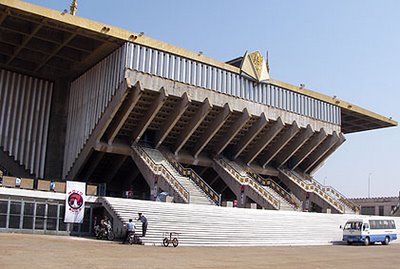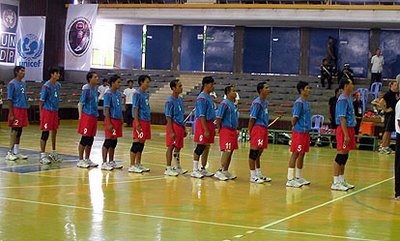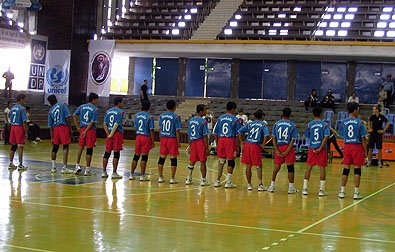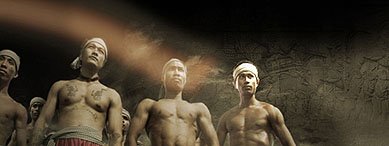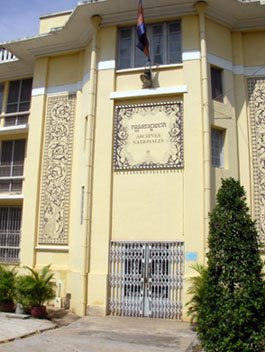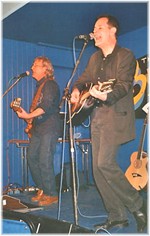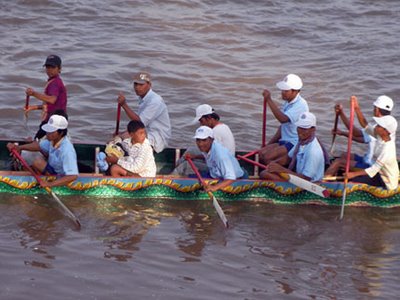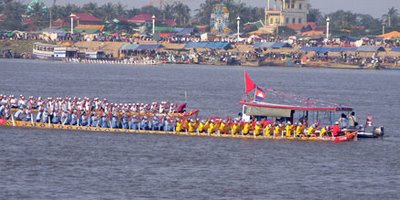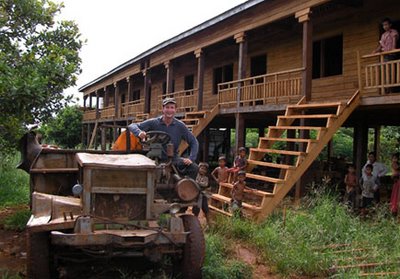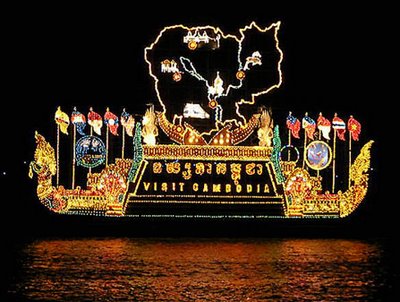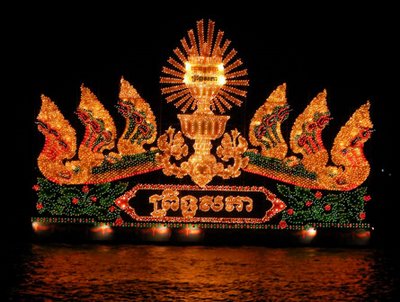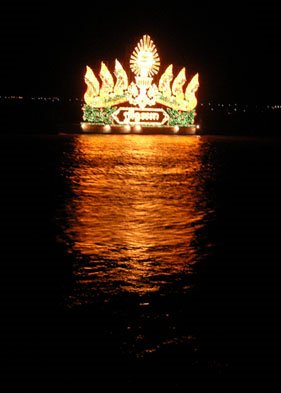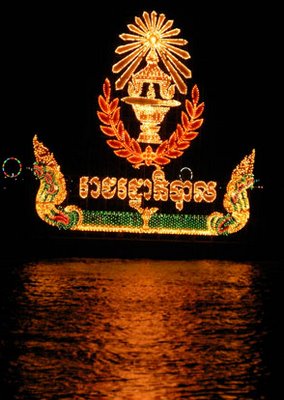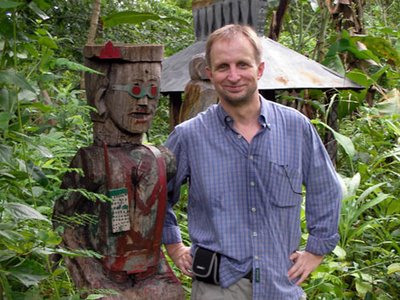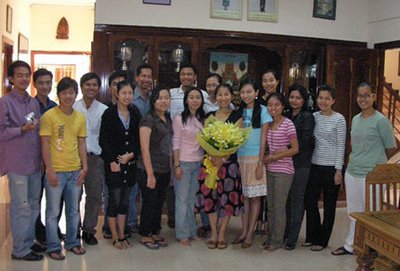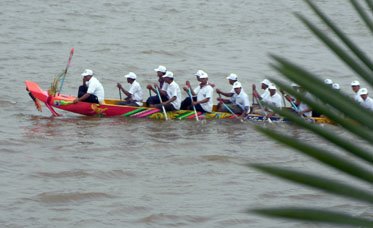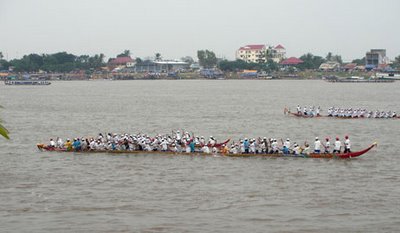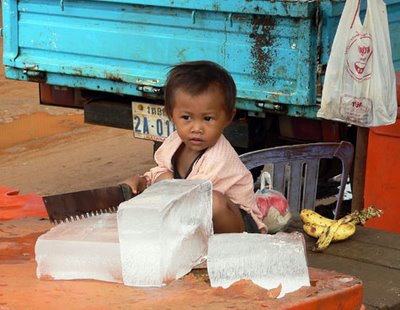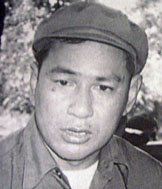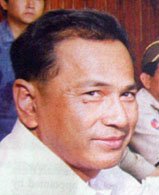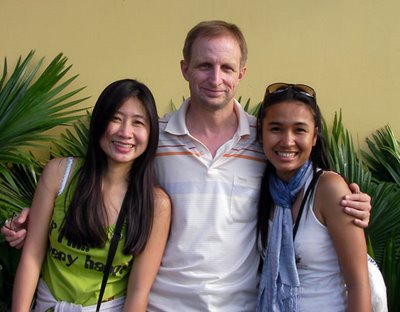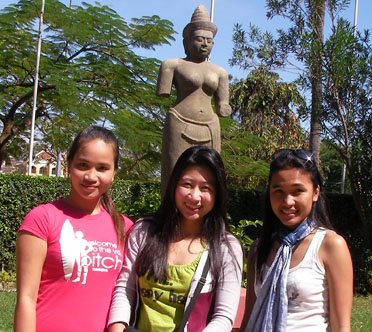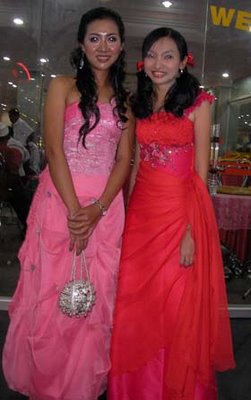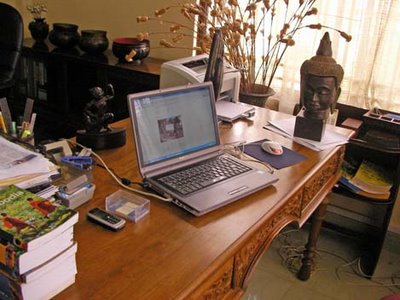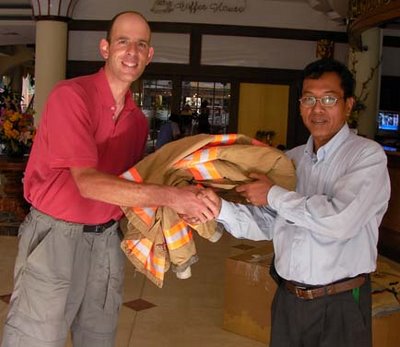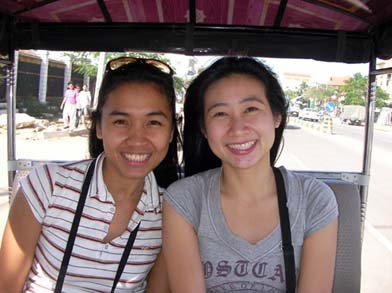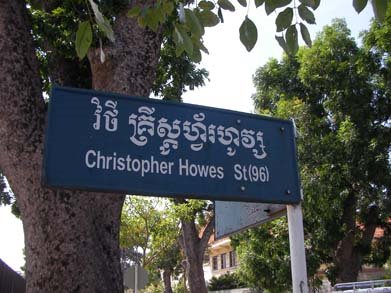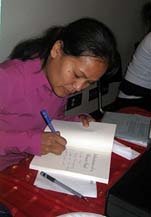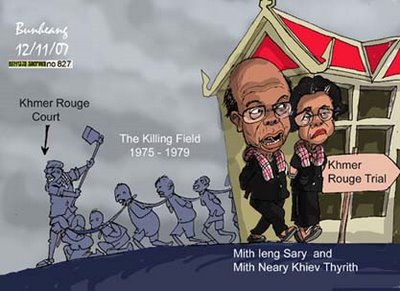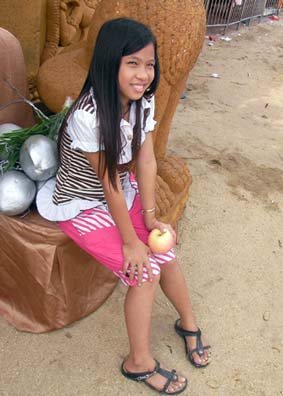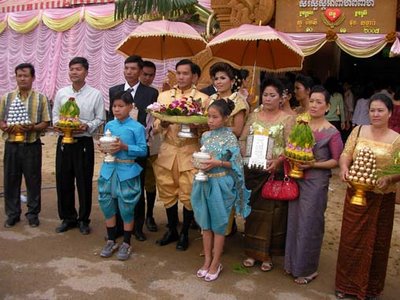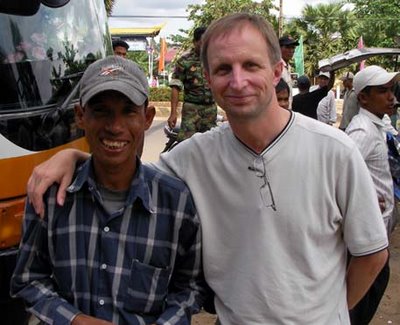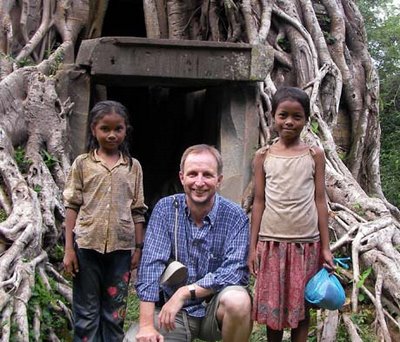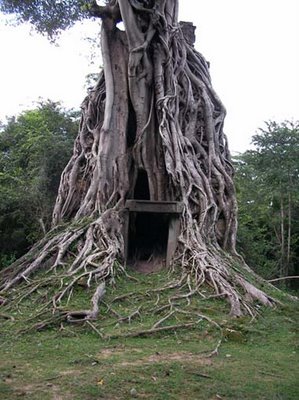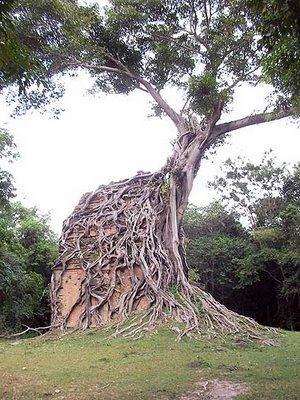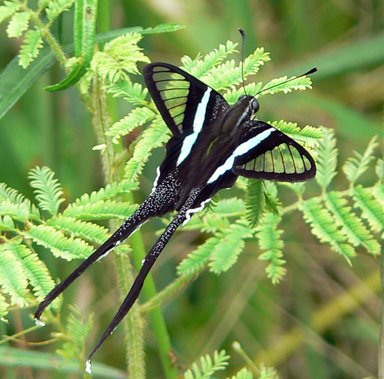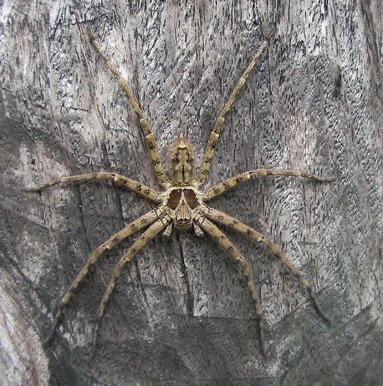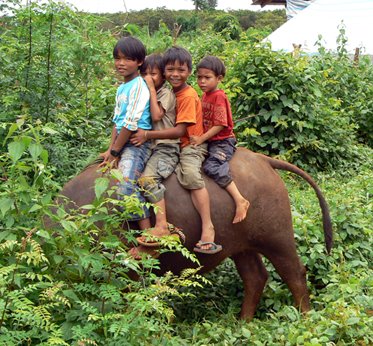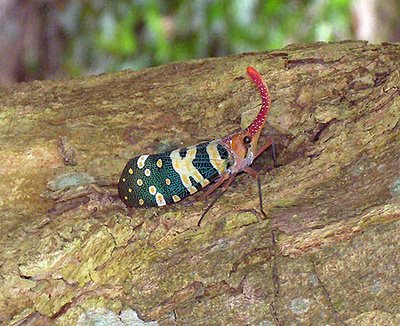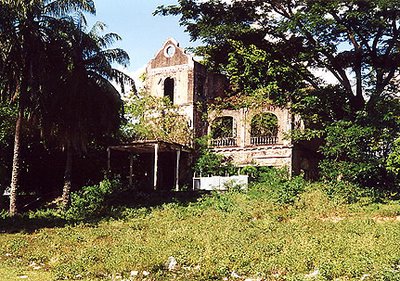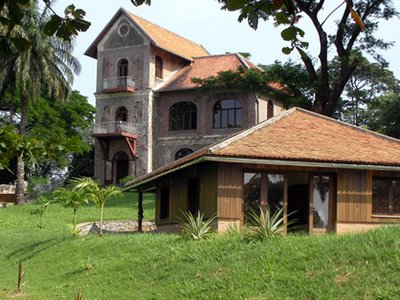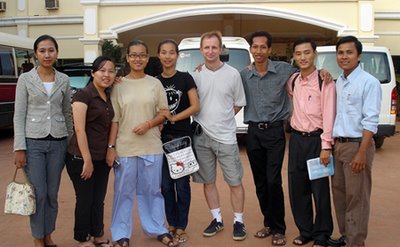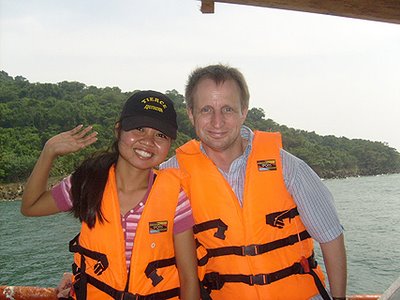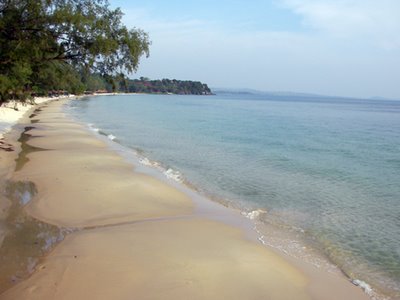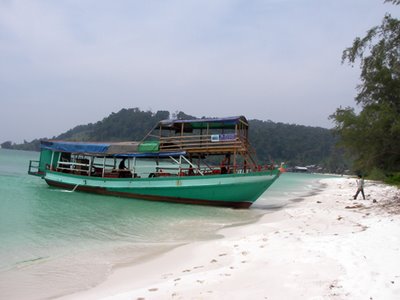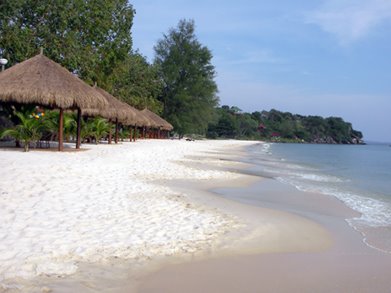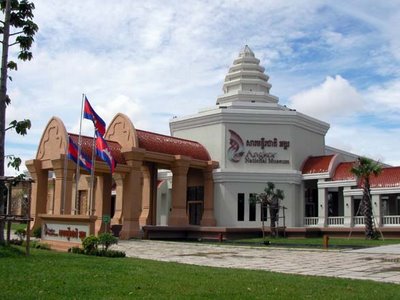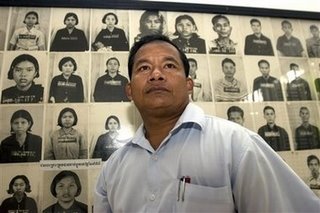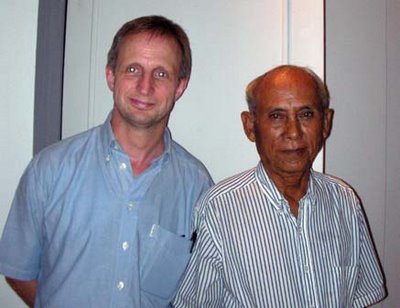The
Harpswell Foundation is on a mission to provide educational opportunities for disadvantaged children and young people. I met Alan Lightman, its founder, a few years ago and in recent years they've built a school and a dormitory for women in Phnom Penh attending college. Find out more about the foundation
here.
The following story about Alan Lightman and Harpswell appeared in today's Boston Globe and is reproduced here with the author's permission. Thanks Tinker.
Lightman's Dream :
MIT physicist and author empowers young Cambodian women by building a dormitory for them in Phnom Penh -
by Tinker Ready, Globe Correspondent, Boston Globe (Mass., USA).The new three-story Harpswell Foundation Dormitory for University Women is named for a town in Maine. But it's on an unpaved street in Phnom Penh, Cambodia, populated with fried fish vendors, motorbike taxis, and roaming chickens. The name is a nod to the building's founder and chief supporter, Alan Lightman, the MIT physicist and celebrated author. Lightman, a soft-spoken, deep-thinking Southerner who summers on a quiet island near Harpswell, said he now spends about a third of his time running the dorm for rural women he built in Cambodia. While working on another aid project there in 2003, Lightman learned that a lack of secure housing prevents many village women from going to college. All the schools are in the gritty capital, and few offer dormitories. Lightman saw a clear solution. He raised money, bought a piece of land, hired contractors, and built a dorm. Now, he is "Dad" to more than 30 women. Until the dorm opened about a year ago, they faced lives as rice farmers, tour guides, or possibly brides in arranged marriages. Now they want to work for the government, earn PhDs, and study overseas. "As unexpected as it was to find myself on the other side of the planet in the culture I knew nothing about, I felt like I could make a difference," Lightman said. "It wasn't a lost cause. This is something that was not beyond my reach." Lightman's vision for the dorm goes beyond offering a safe haven and a leg up to young scholars. A brass plaque inside House 50 on Street 508 spells it out in both Khmer and English: "Our mission is to empower a new generation of Cambodian women." A similar bilingual plaque outside the building announced the name of the dorm, but it has disappeared twice. Local kids can get $5 for the brass, Lightman said. A Memphis native, Lightman is a theoretical physicist by trade. In the 1980s he taught astronomy at Harvard and moved on to MIT, where he is still part of the science writing program. He has two adult daughters, and he and his wife, painter Jean Lightman, split their time between Concord and Maine.
Change within reach
A phone call from a stranger started Lightman's journey to Cambodia. Frederick Lipp, a Unitarian minister in Portland, Maine, wanted to use Lightman's book "Einstein's Dreams" in a sermon. The two men became friends, and eventually Lightman joined Lipp's effort to help a small, Spartan Cambodian village about 50 hard miles from Phnom Penh. Lightman recalled the day he and his daughter Elyse first went to Tramung Chrum to meet the villagers. He was thinking he might want to join Lipp's effort, but he was unprepared for the emotions that hit him. "The women started coming up to us, holding their babies, and said, 'Please help us build a school,' " he said. "I was just amazed that in this remote village with no electricity, no plumbing, no toilets, they were talking about education. . . . I was overwhelmed by their courage and their ability to think in the long term."So Lightman - a serious and unflashy person - did something he finds extremely difficult. He asked family and friends for money. He talked about Cambodia's painful recent history, which remains defined by memories of the 1970s, when the United States bombed provinces at the Vietnam border and the Maoist Khmer Rouge marched into Phnom Penh. The Khmer Rouge emptied the cities and sent everyone to virtual prison farms. Almost four years later, the Vietnamese invaded, but not before about 1.7 million people were summarily executed or died of disease or starvation. In 1994, the Vietnamese left, and the United Nations sponsored elections, but the country still suffers from years of isolation, decay, poverty, and corruption. What this meant for Tramung Chrum is that no one ever remembers having a "concrete" school, Lightman told potential donors. Instead, they hold classes in a makeshift palm-leaf shelter. The 50 or so contributors who stepped up became the core supporters of the Harpswell Foundation. In the process, Lightman met Chea Veasna, a Cambodian lawyer working on the Tramung Chrum school project. She told him that she lived in an unfinished space underneath the law school building while studying there. There were no college dorms in the city then, and there are few now. Male students can bunk in the city's many temples, but Buddhist rules bar women, she explained. "Veasna convinced me that this was a critical problem, and she and I together hatched the idea of building the dormitory," Lightman said. The dollar goes a long way in Cambodia; they were able to do it for $150,000.Lightman travels to Cambodia several times a year. Even when the family retreats to the quiet of their purposely unwired house in Maine, Elyse Lightman said, her father often slips into town to check dorm-related e-mail. "It's like anything else in his life; he puts a lot of his own care and time into," she said. "He is very passionate about it."Lipp called the dorm project " 'Einstein's Dreams' live.""In Alan's book, you're captured by something that you have never thought before," Lipp said. "You dream yourself into a new reality where the world has changed. . . . That's what happened here."
The smartest and bravest
For So Dany, a smiley 20-year-old from a village in western Cambodia, "new reality" might be an understatement. So's parents are farmers, and both are Khmer Rouge survivors. She wanted to go to college, she said, but her parents were afraid to send her to the city.One day, dorm manager Peou Vanna appeared at her school, asking for the smartest, "bravest" girls in her class, she said. After a series of interviews and tests, So was chosen. "If I did not have the opportunity to get a college education, I would end up being a market seller in my village," she said in Khmer. Instead, she and the inaugural group of about 30 women - also plucked out of their villages - moved into the pinkish, cement building about 15 minutes from the city center. By habit, they head out to school on their bicycles wearing the traditional white shirt and pleated skirt uniforms. But unlike the generation before them, they tend toward jeans instead of sarongs.In the dry season, Street 508 is dusty; during the rains, it is flooded. The air smells of cooking fires, roasted fish, or whatever street-food vendors have to offer. The dorm is set back a bit but stands out among the vegetable shops and run-down villas for its newness and for the large, medallion-like facade vents on each floor sculpted into the shape of Cambodian dancers. Inside, some of the residents listen intently as an American volunteer teaches computer skills, in English. In addition to room and board, life in the dorm includes English classes, access to Internet-equipped computers, and weekly discussion of the news in The Cambodia Daily. They also have 24-hour security.Back home in leafy Concord, Lightman tries to manage problems like sleeping guards via e-mail. He has other things to worry about - like reviews of his new book, "Ghost." But the dorm is now a part of each day. When he talks of what drew him so deeply into the project, he always goes back to that first day at Tramung Chrum. The well-traveled Lightman said he is sure he wasn't reacting to the shock of seeing desperate poverty firsthand."I was reacting to something that rose above the poverty," he said. "I guess hope is what really got under my skin. I found there was hope there."
* * * * *
My pal Andy Booth and Sage Insights have a new website for their
Sage Foundation at
www.sagecambodia.org. Please pay a visit. The Sage Foundation helps Cambodian children gain a valuable education, providing them with opportunities and choices in life many of us might take for granted. They build and renovate schools, provide support in the form of native English speaking teachers, volunteer classroom assistants, vocational local teachers (farming, crafts and hairdressing) and the funding of additional materials not supplied by the Ministry of Education budget. The Sage Foundation requires volunteers to assist with teaching English, painting, decorating, gardening and other general maintenance of the school grounds. Contact Andy at the website for more details.
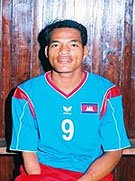 As expected, Cambodia took just three sets to dispose of India in this afternoon's quarter-final clash of the WOVD Standing Volleyball World Cup at the Olympic Stadium, here in Phnom Penh. Cambodia, who finished 3rd in the round-robin series of matches, will now face Slovakia in a very tough semi-final tomorrow (Friday) at 6pm, and will need their supporters to turn out in force to help make the difference. Slovakia and Germany are the two countries to inflict Cambodia's only defeats so far in this competition. India proved to be plucky opponents after easily losing the first set 26-6, with Mean Veasna (right) in top form for the home team. They led the second set 13-11 before Cambodia stormed back to win it 25-20. The third set saw Cambodia coasting a little, making substitutions to give squad members a taste of the action, before finally winning 25-14. Not a classic by any stretch of the imagination, but a job well done and time to relax before tomorrow's all-important semi-final. Stand Up Cambodia #1.
As expected, Cambodia took just three sets to dispose of India in this afternoon's quarter-final clash of the WOVD Standing Volleyball World Cup at the Olympic Stadium, here in Phnom Penh. Cambodia, who finished 3rd in the round-robin series of matches, will now face Slovakia in a very tough semi-final tomorrow (Friday) at 6pm, and will need their supporters to turn out in force to help make the difference. Slovakia and Germany are the two countries to inflict Cambodia's only defeats so far in this competition. India proved to be plucky opponents after easily losing the first set 26-6, with Mean Veasna (right) in top form for the home team. They led the second set 13-11 before Cambodia stormed back to win it 25-20. The third set saw Cambodia coasting a little, making substitutions to give squad members a taste of the action, before finally winning 25-14. Not a classic by any stretch of the imagination, but a job well done and time to relax before tomorrow's all-important semi-final. Stand Up Cambodia #1. 